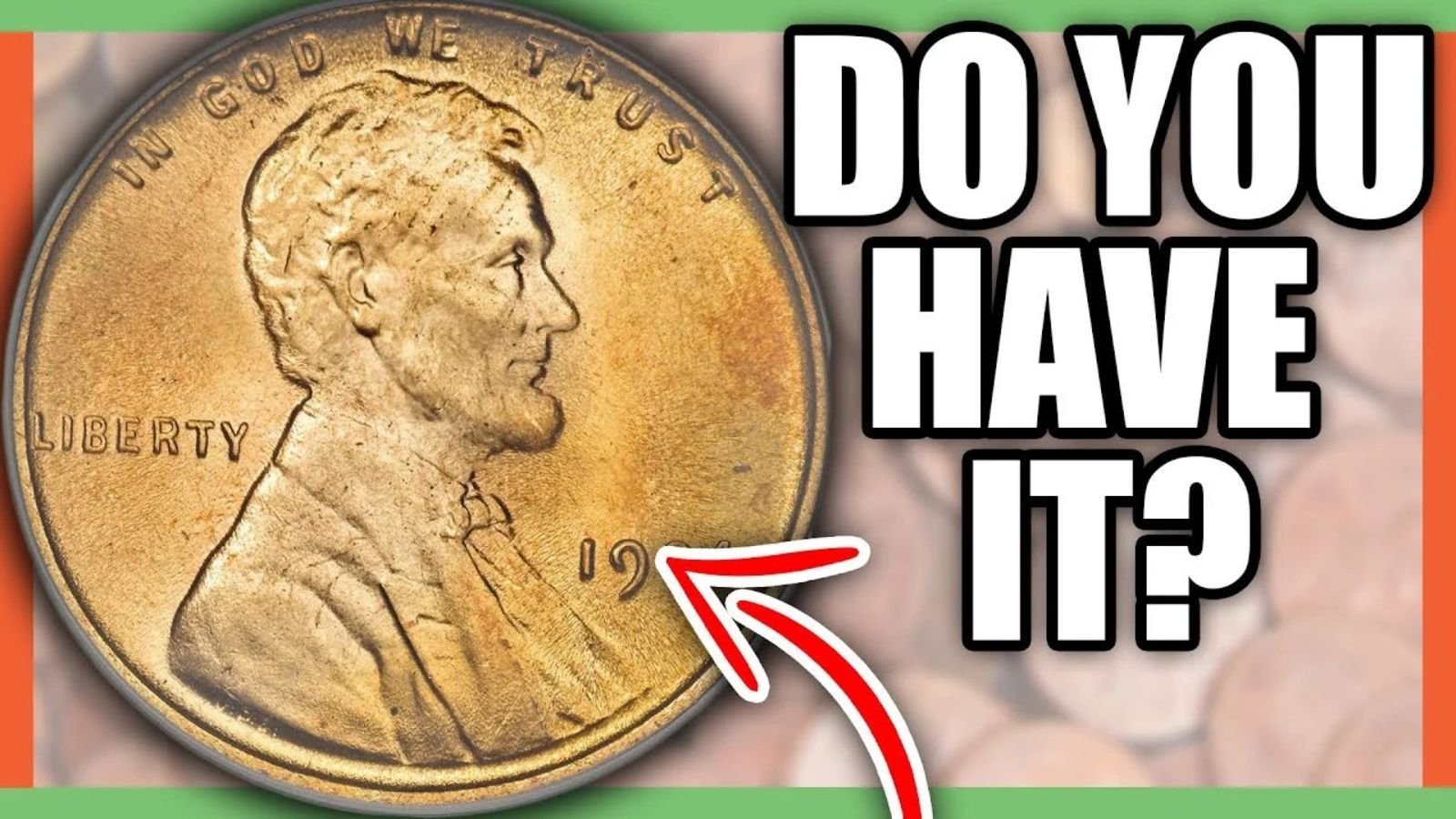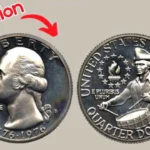When most of us come across a penny, we hardly give it a second glance. It’s the lowest denomination in U.S. currency and often ends up at the bottom of a drawer or jar, forgotten and overlooked. But what if I told you that a single one of those pennies—yes, just one—could be worth millions of dollars? That’s the fascinating reality behind the Lincoln Wheat Penny, a small coin with a remarkably rich history and even richer potential value.
The Rare Bicentennial Quarter Valued at $1 Million, Still in Circulation
Lincoln Wheat Penny: A Revolutionary Coin in U.S. History
The Lincoln Wheat Penny made its debut in 1909 and marked a significant departure from the designs of earlier American coins. Before this penny, U.S. coins typically featured allegorical figures or symbolic imagery. With the Lincoln Wheat Penny, for the first time ever, a real person—President Abraham Lincoln—was immortalized on American currency. This wasn’t just a cosmetic update; it was a revolutionary move meant to honor one of the most respected figures in American history.
Victor David Brenner, the artist behind the coin, was commissioned to design the penny in commemoration of Lincoln’s 100th birthday. The obverse of the coin bears Lincoln’s side profile, while the reverse features two stylized wheat stalks curving along the sides—a simple yet powerful symbol of prosperity and American agriculture. These two stalks gave the coin its colloquial name: the Lincoln Wheat Penny.
From 1909 to 1958, these pennies were a mainstay in the pockets of millions of Americans. Most were composed primarily of copper, but some rare exceptions—particularly during the World War II years—make certain editions of the Lincoln Wheat Penny extremely valuable today.
The 1943 Copper Lincoln Wheat Penny: A Million-Dollar Mistake
Among the most legendary coins in the collector world is the 1943 copper Lincoln Wheat Penny. During World War II, copper was a strategic resource essential for ammunition and other military supplies. To conserve this precious metal, the U.S. Mint began producing pennies using zinc-coated steel instead of copper in 1943.
However, a small number—believed to be fewer than 40—were mistakenly struck using the old copper planchets left over from 1942. These accidental creations are now among the rarest coins in existence. Because of their extreme rarity, condition, and the historical context in which they were minted, these coins command astronomical prices at auctions.
One such copper 1943 Lincoln Wheat Penny fetched $1.7 million in a 2010 sale. Even more astonishing, a pristine version of the same coin reportedly sold for a staggering $4.1 million in 2021. These numbers are not just auction fluff; they reflect the genuine value collectors place on rarity, condition, and historical uniqueness.
What Makes a Lincoln Wheat Penny Valuable?
Not every Lincoln Wheat Penny is worth a fortune. In fact, the vast majority still in circulation or hiding in jars are only worth a few cents over face value. However, several critical factors can elevate a penny from common currency to prized collectible:
1. Date and Composition
The most obvious detail to check is the date. If you come across a 1943 Lincoln Wheat Penny that’s copper-colored, you might be holding a major rarity. Most 1943 pennies were made of steel and have a silver-gray appearance. If yours looks like copper, grab a magnet. A steel penny will stick; a copper one won’t. That non-magnetic reaction could be your first clue that you’ve found something incredible.
2. Mint Mark
Just below the date on the obverse side, you may see a small letter—“D” for Denver or “S” for San Francisco. No letter means it was minted in Philadelphia. Some mint marks make certain editions rarer than others. For instance, a 1943-D copper Lincoln Wheat Penny is considered ultra-rare, with only a few known examples in existence.
3. Weight
A regular steel penny weighs about 2.7 grams, while a copper Lincoln Wheat Penny weighs approximately 3.11 grams. Weighing your coin with a precise digital scale can help confirm its composition.
4. Condition
The coin’s condition plays a huge role in determining its market value. A pristine, uncirculated penny—free of scratches, tarnishing, or nicks—can fetch far more than one that’s been worn down by decades of use. Professional grading services like PCGS (Professional Coin Grading Service) and NGC (Numismatic Guaranty Corporation) can assign an official grade that collectors trust.
5. Errors and Anomalies
Some Lincoln Wheat Pennies are valuable due to minting errors. These might include doubled dies, off-center strikes, or misaligned planchets. Such error coins are highly collectible and can command thousands of dollars, depending on the nature of the mistake.
Could a Rare Lincoln Wheat Penny Still Be Out There?
You might be wondering, “Is it even possible to find one of these valuable coins today?” The answer is: yes, although the odds are slim. Rare Lincoln Wheat Pennies have surfaced in places you’d least expect—inside old piggy banks, in inherited collections, even mixed in with regular pocket change.
While most people ignore pennies entirely, serious collectors often sift through coin rolls from banks or attend estate sales in hopes of striking it rich. The next time you dump out your change jar, take a closer look—you could be sitting on a fortune and not even know it.
What to Do If You Think You’ve Found a Valuable Lincoln Wheat Penny
If you believe you’ve stumbled upon a rare Lincoln Wheat Penny, follow these crucial steps:
-
Do Not Clean It – Cleaning a coin, no matter how dirty it looks, can strip away essential details and drastically reduce its value. Leave it in its current condition.
-
Use Gloves – Oils and dirt from your fingers can affect the coin’s surface, especially if it’s uncirculated or has high potential value.
-
Get It Authenticated – Contact a reputable numismatist or send your coin to a trusted grading service like PCGS or NGC. These services provide authentication, grading, and encasing.
-
Consider Your Selling Options – If the coin is genuine and valuable, you’ll have a range of selling options. Auction houses such as Heritage Auctions often fetch top dollar, especially when bidding wars break out. Private collectors, too, may offer significant amounts.
Why the Lincoln Wheat Penny Fascinates Collectors
The enduring fascination with the Lincoln Wheat Penny goes beyond its monetary value. For many, it’s a nostalgic piece of history. It represents a different era—one where copper coins jingled in every pocket, and each penny told a silent story of American life, from the Depression era to post-war prosperity.
Moreover, the artistry and symbolism embedded in the design make it a standout. The wheat on the reverse side pays homage to America’s agricultural roots, while Lincoln’s portrait symbolizes unity, perseverance, and democratic ideals.
Investing in Lincoln Wheat Pennies: A Beginner’s Perspective
With stories of million-dollar sales, it’s easy to get caught up in the hype. But how should a newcomer approach investing in Lincoln Wheat Pennies?
Start small. Buy a magnifying glass and a coin scale. Learn to identify mint marks and understand grading scales. Visit coin shows and join numismatic forums. The more you learn, the better your chances of spotting a rare find.
Many collectors begin by gathering pennies from every year between 1909 and 1958. This “year set” is an excellent way to familiarize yourself with the range and variations within the Lincoln Wheat Penny series. Over time, you’ll develop a keen eye for what’s common and what might be extraordinary.
Final Thoughts: The Humble Penny That Made Headlines
The story of the Lincoln Wheat Penny is more than just a tale of unexpected riches—it’s a celebration of American history, design, and the unpredictable world of coin collecting. From the copper-colored legends of 1943 to the everyday wheat backs that filled generations of pockets, these coins carry with them both sentimental and financial value.
So, before you toss that next penny aside, take a moment to check the date. Examine the color, the mint mark, and maybe even weigh it. That small coin could be much more than loose change—it might be a gateway to a multimillion-dollar surprise.
Because when it comes to the Lincoln Wheat Penny, history, rarity, and a little bit of luck can turn a one-cent piece into a headline-grabbing treasure.
Some Important Link
| Telegram Group | Click Here |
| WhatsApp Group | Click Here |
| Home Page | Click Here |














